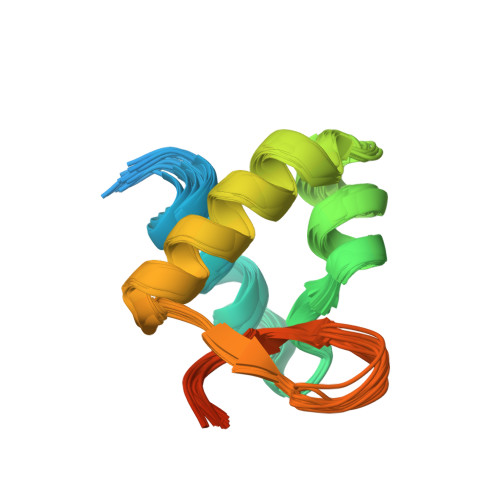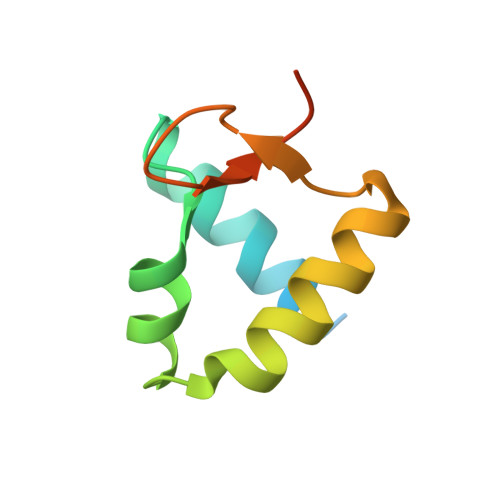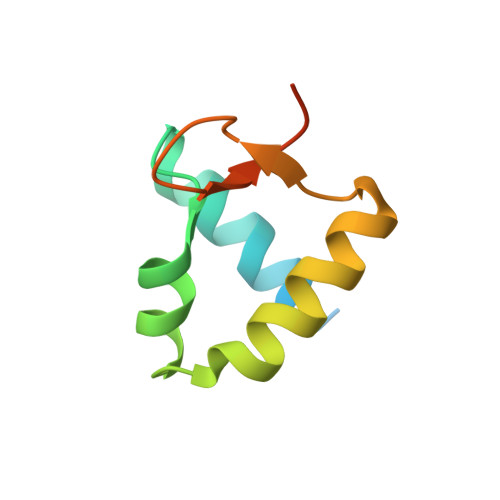The solution structure of the N-terminal domain of E3L shows a tyrosine conformation that may explain its reduced affinity to Z-DNA in vitro.
Kahmann, J.D., Wecking, D.A., Putter, V., Lowenhaupt, K., Kim, Y.-G., Schmieder, P., Oschkinat, H., Rich, A., Schade, M.(2004) Proc Natl Acad Sci U S A 101: 2712-2717
- PubMed: 14981270
- DOI: https://doi.org/10.1073/pnas.0308612100
- Primary Citation of Related Structures:
1OYI - PubMed Abstract:
The N-terminal domain of the vaccinia virus protein E3L (Z alpha(E3L)) is essential for full viral pathogenicity in mice. It has sequence similarity to the high-affinity human Z-DNA-binding domains Z alpha(ADAR1) and Z alpha(DLM1). Here, we report the solution structure of Z alpha(E3L) and the chemical shift map of its interaction surface with Z-DNA. The global structure and the Z-DNA interaction surface of Z alpha(E3L) are very similar to the high-affinity Z-DNA-binding domains Z alpha(ADAR1) and Z alpha(DLM1). However, the key Z-DNA contacting residue Y48 of Z alpha(E3L) adopts a different side chain conformation in unbound Z alpha(E3L), which requires rearrangement for binding to Z-DNA. This difference suggests a molecular basis for the significantly lower in vitro affinity of Z alpha(E3L) to Z-DNA compared with its homologues.
Organizational Affiliation:
Combinature Biopharm AG, Robert-Rössle-Strasse 10, D-13125 Berlin, Germany.


















